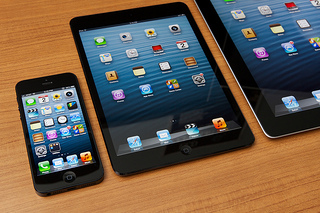No PC? That’s fine…
Did you know that students can complete the National Student Survey, module evaluations and stage evaluations using their mobile devices? Both the NSS and EvaSys evaluations can be completed on iOS, Android and Windows based devices.
Students don’t need to be tied to a PC to complete the evaluations, they can complete them anywhere – on the bus, on the Metro, at the end of your lecture – you name it, as long as they have signal, they can do it!
Boost response rates!
Letting your students know that they can complete the evaluations on their mobile devices may even help boost your response rates – they might not be aware that they can use their tablets or mobiles (or how easy it is)!
You could use the end of your lecture or seminar to ask students if they could use their mobiles to complete the evaluation on a module, without the need for an IT Cluster. You could also ask your final year SSC representatives to complete the NSS towards the end of a committee meeting and then spread the word to their course mates.
How do students use their mobile devices?
It’s simple, for the NSS students can follow this link: http://thestudentsurvey.co.uk/ or follow the link sent to their email. For EvaSys evaluations, students open their student email and find the EvaSys emails with their personal link in.
Once they click the link, the evaluation will open and they can complete it using their mobile device (some students will need to copy the link by highlighting it in their email and pasting into a web browser).
Alternatively, for EvaSys evaluations, students can log into Blackboard on their mobile device and find a list of open surveys under the ‘My EvaSys’ section on the ‘My Institution’ tab. You could even pop a notification on your Blackboard module page with some directions to the evaluation, or show students during class where to find them.
We advise that students save the evaluation as they are completing it – this way they don’t need to start from the beginning again if they get disconnected. It also means they can exit the evaluation, and go back to the place they last saved when they re-open the evaluation.
For more information, please take a look at our guide to using mobile devices.


